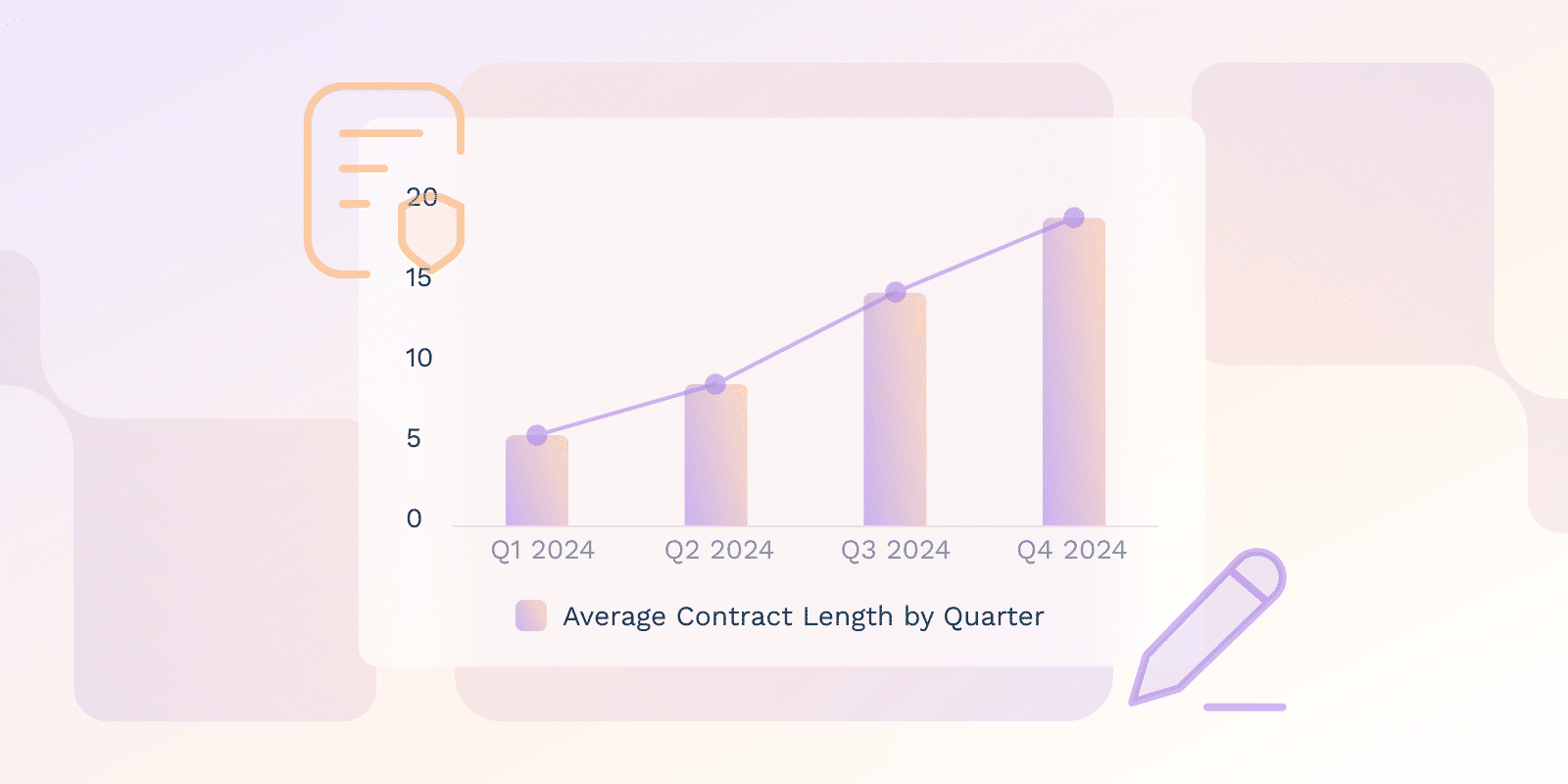SaaS Metrics and KPIs
What is Average Contract Lenght (ACL) in SaaS?

What is Average Contract Lenght (ACL) in SaaS?
ACL or Average Contract Length is one of the metrics in the SaaS industry that indicates the average time companies are able to retain customers contractually.
To calculate ACL, consider the contract lengths utilized in your SaaS business, add them in months, and divide the total length by the number of contracts.
For example, your Saas business has ten customers who have selected monthly plans, two who agreed to annual plans, and 1 in a two-year plan. To calculate the total month, you convert the contracts into months:
ACL= Contract Lengths/ Number of users
Contract Lengths: (10 months * 1) + (2 * 12 months) + (1 * 24 months) = 58 months
Number of Users: 10 + 2 + 1 = 13
ACL= 58 months / 13 contracts = 4.46 months
What factors impact Average Contract Length (ACL) in SaaS?
Some of the factors that influence Average Contract Length (ACL) in SaaS are:
- customer satisfaction
- value proposition
- product quality
- Pricing strategies and tactics
- competition
- market trends
- behavior of customers
While a high-value proposition and high customer satisfaction could potentially contribute to a longer average customer lifetime, the impact on individual cases may vary.
What are the limitations of using ACL as a metric?
While ACL is a valuable metric for SaaS companies to gauge customer retention and predict revenue streams, it has limitations.
ACL data can provide valuable insights into customer engagement, though it may be necessary to supplement it with other sources for a comprehensive understanding of retention and satisfaction.
Although yearly contracts offer advantages, ACL’s focus remains on the purchase amount within a specific period, primarily capturing the loss of contracts. Analyzing the monthly plan might inadvertently introduce an ACL bias due to the simultaneous inclusion of monthly and yearly contracts from the same company.
For instance, company B may have many customers using monthly plans, which somehow influences their average usage satisfaction. While most monthly users of company A are unsatisfied, their overall satisfaction is still higher than that of A’s 12-month users.
SaaS firms also use measures beyond ACL, focusing on internal and external customer interactions, particularly in cases like company A, where users operate independently.
These metrics are helpful when assessing certain aspects of user interaction with the product, as well as their engagement with it. Identification of dynamics of active users, duration of usage, usage of the feature, mode of usage, and periodicity of use help define customers’ behavior in relation to the product and measure their involvement.
These metrics could have a potential impact on product development, gauging market potential, and developing strategies to enhance customer satisfaction and loyalty.
What is the relationship between the average customer lifespan in Advanced Customer Lifecycle (ACL) and pricing and selling in SaaS?
Average Customer Lifespan (ACL) is one of the most critical factors of pricing for SaaS companies and sales strategies. It is a metric that people inside the business need to familiarize themselves with to understand when a customer is active and how long they will keep paying for the subscription.
Information on different pricing methods, upselling, and cross-selling can be used to develop strategies. Pricing and selling strategies aligned with ACL data may affect business revenue generation and customer satisfaction, though the results may vary depending on other factors.
| Aspect | Short-Term Contracts | Long-Term Contracts |
|---|---|---|
| Financial Impact | ||
| Payment Structure | Monthly payments, higher per-month cost | Annual/multi-year payments, discounted rates |
| Revenue Stability | Variable monthly revenue | Predictable long-term revenue |
| Customer Dynamics | ||
| Customer Commitment | Lower initial commitment, easier adoption | Higher commitment, stronger relationship |
| Flexibility | High flexibility to change or cancel | Limited flexibility, locked-in terms |
| Business Strategy | ||
| Discount Application | Limited-time offers (LTO) | Volume discounts, multi-year incentives |
| Risk Level | Higher churn risk | Lower churn risk, higher acquisition barrier |
How do discount strategies in business apply and integrate with ACL philosophy?
SaaS pricing offers various methods for implementing discount strategies like LTO (limited-time offer) and managing annual contract value (ACV). Giving discounts for extended-term contracts allows customers to commit less in the short run, hence increasing the ACL.
One approach could be to provide a temporary discount on the annual plan or to offer a more competitive price for multi-year subscriptions. While it is widely acknowledged that this practice can encourage customers to choose longer contracts, the extent to which it contributes to revenue stability over time remains unclear.
SaaS companies need to have the best of both worlds – the ability to capture potential customers with longer-term contracts and the risks from this type of discounting in a way that does not negatively affect the financial goals of the company.
Conclusion
Average Contract Length (ACL) is significant in customer retention and revenue generation for SaaS companies. Some factors affecting ACL are customer satisfaction, value proposition, product quality, pricing, competition, market trends, and customer behavior.
While a high ACL means more extended contracts and better revenue, do consider its limitations and use it with other metrics to understand its capabilities fully. SaaS businesses should use other metrics for more insights to ultimately drive business growth.